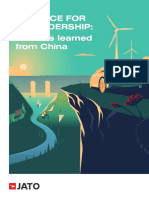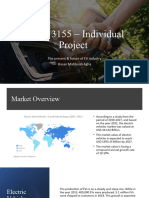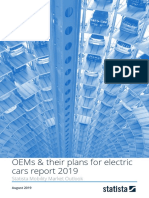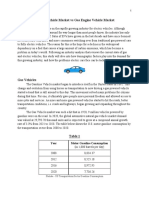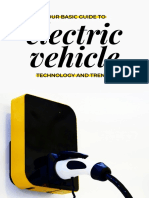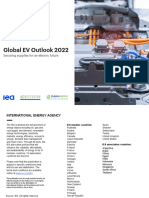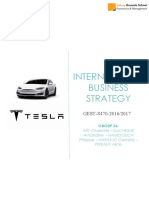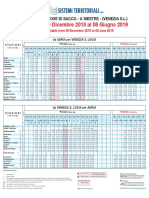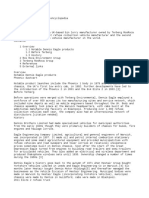0% found this document useful (0 votes)
188 views4 pagesGlobal EV Market Outlook 2024
The global electric vehicle market was valued at $162.34 billion in 2019 and is forecast to grow rapidly through 2024. China currently has the largest EV market, followed by Europe and the US. Norway has the highest market share of EVs. Key players leading the market include Tesla, BYD, and BMW. Tesla is the world's largest EV manufacturer, while BYD is second largest. The market is driven by advancing battery technology, lower costs, government incentives, and efforts to reduce air pollution and greenhouse gas emissions. The report segments the EV market by vehicle type, use, price, and region.
Uploaded by
Chinmay NaCopyright
© © All Rights Reserved
We take content rights seriously. If you suspect this is your content, claim it here.
Available Formats
Download as DOCX, PDF, TXT or read online on Scribd
0% found this document useful (0 votes)
188 views4 pagesGlobal EV Market Outlook 2024
The global electric vehicle market was valued at $162.34 billion in 2019 and is forecast to grow rapidly through 2024. China currently has the largest EV market, followed by Europe and the US. Norway has the highest market share of EVs. Key players leading the market include Tesla, BYD, and BMW. Tesla is the world's largest EV manufacturer, while BYD is second largest. The market is driven by advancing battery technology, lower costs, government incentives, and efforts to reduce air pollution and greenhouse gas emissions. The report segments the EV market by vehicle type, use, price, and region.
Uploaded by
Chinmay NaCopyright
© © All Rights Reserved
We take content rights seriously. If you suspect this is your content, claim it here.
Available Formats
Download as DOCX, PDF, TXT or read online on Scribd
/ 4




















